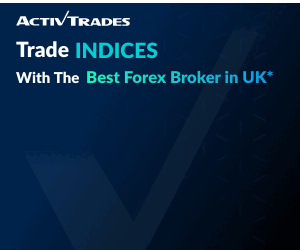Did you know that using the right indicators can significantly improve your chances of success in scalping? Now, you might be wondering,
“What are these best forex scalping indicators for beginners?”
Imagine you’re a trader focusing on forex scalping. You observe the EUR/USD currency pair and notice that the Bollinger Bands are narrowing, indicating a period of low volatility. At the same time, the RSI is showing the EUR/USD pair as being overbought. This, combined with the 5-period EMA crossing below the 20-period SMA, suggests a potential short entry point. Keeping an eye on these indicators can help guide your decision-making process as you navigate the fast-paced world of forex scalping.
In this discussion, we will explore the top indicators that can help you identify profitable opportunities and make informed trading decisions. Let’s explore these indicators together and discover how they can revolutionize your trading strategy.

Simple Moving Average (SMA)
The Simple Moving Average (SMA) is a widely-used technical indicator in forex scalping strategies. SMAs calculate the average of a selected range of prices over a specific period. In scalping, SMAs are beneficial for identifying the bullish or bearish trend and potential trend reversals. The different periods of SMAs respond differently to price changes, allowing scalpers to time their entries and exits effectively.
There are several benefits of using SMAs in forex scalping. Firstly, SMAs can help traders determine the overall market trend, providing a foundation for making informed trading decisions. Secondly, SMAs can act as dynamic support and resistance levels, aiding in identifying potential reversals. Additionally, SMAs can provide confirmation for other indicators like Bollinger Bands, stochastics, and RSI.
For beginners looking to implement SMAs in their forex scalping approach, here are some tips:
- Combine SMAs with other indicators to enhance trading signals.
- Use shorter periods for SMAs to capture short-term trends.
- Adjust the SMA period based on the time frame you’re trading.
- Practice proper risk management and set stop-loss orders.
- Continuously monitor and evaluate the effectiveness of your SMA strategy.

Bollinger Bands
Bollinger Bands, a popular indicator for scalping, provide valuable insights into market volatility and potential price reversion to the mean. They consist of three lines: a middle line representing the simple moving average (SMA), and two outer bands that are calculated based on the standard deviation of price. The outer bands expand during periods of high volatility and contract during periods of low volatility. This makes Bollinger Bands particularly useful for identifying potential breakouts or price reversals.
Scalping with Bollinger Bands involves using the bands as entry and exit signals. Traders can enter a trade when the price touches the lower band in an uptrend or the upper band in a downtrend, indicating a potential reversal. Conversely, traders can exit a trade when the price touches the middle line, suggesting a return to the mean.
Compared to other indicators, Bollinger Bands offer a unique perspective on market conditions. They provide a visual representation of volatility and can be used in conjunction with other indicators to confirm signals. Additionally, Bollinger Bands can be effective in different market conditions, as they adapt to changes in volatility.
To summarize, Bollinger Bands are a valuable tool for scalping strategies. They offer insights into market volatility and potential price reversals. Traders can use Bollinger Bands as entry and exit signals, taking advantage of price movements and capturing small profits repeatedly.

Stochastics
Now let’s shift our focus to the subtopic of ‘Stochastics’, a price momentum oscillator that compares the closing price to the range of prices over a set period. Stochastics is a popular indicator used by forex scalpers to identify overbought and oversold market conditions. It consists of two horizontal lines and two moving lines. When the moving lines cross the overbought or oversold levels, it indicates a potential trend reversal, which scalpers can take advantage of.
To effectively use Stochastics in forex scalping, it is important to understand the basics. Traders should be familiar with the overbought and oversold levels, which are typically set at 80 and 20, respectively. When the indicator crosses above 80, it suggests that the market is overbought and a potential reversal to the downside may occur. Conversely, when the indicator crosses below 20, it suggests that the market is oversold and a potential reversal to the upside may occur.
Scalpers can enhance the effectiveness of Stochastics by combining it with other indicators. For example, they can use Stochastics in conjunction with Bollinger Bands to identify potential scalping opportunities. When Stochastics indicates overbought or oversold conditions and the price is at the upper or lower band of the Bollinger Bands, it provides a stronger signal for a potential reversal.
In terms of strategies, scalpers can utilize Stochastics in various ways. They can use it as a standalone indicator, taking trades based on overbought or oversold levels. Alternatively, they can use it as confirmation in conjunction with other indicators. For example, they can wait for Stochastics to cross above 80 or below 20 and then look for a moving average crossover or a breakout from a chart pattern.

Relative Strength Indicator (RSI)
The Relative Strength Indicator (RSI) is a valuable tool for forex scalpers, allowing them to measure the speed of price movements and identify overbought and oversold conditions in the market. Here are some key points to consider when using the RSI in your scalping strategy:
- Using RSI in different timeframes: The RSI can be used across various timeframes, from minutes to hours. Scalpers should consider using shorter timeframes for faster-paced trading and longer timeframes for more reliable signals.
- RSI divergence in scalping strategy: RSI divergence occurs when the price and the RSI indicator move in opposite directions. This can indicate a potential trend reversal and can be used as a signal in scalping strategies.
- Combining RSI with other indicators for scalping: Combining the RSI with other indicators, such as moving averages or Bollinger Bands, can provide additional confirmation for entry and exit points in scalping trades.
- RSI overbought/oversold levels in scalping: The RSI has overbought and oversold levels, usually set at 70 and 30, respectively. Scalpers can use these levels to identify potential reversals or trend continuations.
- RSI as a confirmation tool in scalping: The RSI can be used as a confirmation tool to validate other signals or patterns. For example, if a scalper sees a bullish candlestick pattern, they can use the RSI to confirm whether the market is indeed overbought or oversold.

Scalping Strategies
To effectively implement scalping strategies in forex trading, it is important to focus on short-term trades and make quick entries and exits from positions.

Scalping involves taking advantage of small price movements and capturing small profits repeatedly. When compared to swing trading, scalping offers the advantage of lower risk due to the shorter trade duration and smaller price moves. However, it requires experience and a commitment of time. Developing a scalping strategy involves identifying entry and exit signals using technical indicators such as moving averages, Bollinger Bands, stochastic oscillator, and the relative strength index (RSI).
It is important to choose the right forex broker for scalping, one that offers low spreads, fast execution, and allows for scalping strategies. It is also crucial to avoid common mistakes in forex scalping strategies, such as overtrading, not using stop-loss orders, and failing to monitor market conditions. Scalping techniques may vary depending on different market conditions, such as forex scalping, stock scalping, cryptocurrency scalping, and futures scalping. Overall, scalping strategies can be effective for capturing small profits repeatedly, but it requires discipline, risk management, and a solid trading plan.

One popular indicator used for scalping is the Moving Average (MA). In this example, we’ll use a combination of two MAs: a 10-period Simple Moving Average (SMA) and a 20-period Exponential Moving Average (EMA).
Here’s how you can use these indicators for scalping:
- Identify the trend: Start by analyzing the overall trend of the EUR/USD pair. You can use higher timeframes like the 1-hour or 4-hour charts to determine the trend direction.
- Enter the trade: Once you have identified the trend, switch to a lower timeframe like the 5-minute or 15-minute chart. Wait for the price to retrace or pullback within the trend.
- Watch for the crossover: When the 10-period SMA crosses above the 20-period EMA, it indicates a potential bullish signal. Conversely, when the 10-period SMA crosses below the 20-period EMA, it indicates a potential bearish signal.
- Confirm with other indicators: To increase the accuracy of your scalping strategy, you can use additional indicators like the Relative Strength Index (RSI) or the Stochastic Oscillator to confirm the entry signals provided by the moving averages.
- Set your stop-loss and take-profit: Place a tight stop-loss just below the recent swing low (for a buy trade) or above the recent swing high (for a sell trade). Take-profit levels can be set based on nearby support and resistance levels or by using a predefined risk-to-reward ratio.
- Exit the trade: As a scalper, aim to capture quick profits. Once you have achieved your desired profit target or if the market reverses against your trade, exit the position.
Remember, it’s crucial to practice proper risk management and backtest your strategy before implementing it in real-time trading. Additionally, it’s important to stay updated with economic news releases and market events that can impact the EUR/USD pair, as they can influence your scalping strategy.

Forex Brokers for Scalping
When selecting a forex broker for scalping, it is important to consider factors such as low spreads, fast execution, and compatibility with scalping strategies. Here are some key considerations when choosing a forex broker for scalping:
- Forex scalping brokers: Look for brokers that specifically cater to scalpers and offer features such as low spreads and fast trade execution.
- Scalping vs long term trading: Some brokers may have restrictions or limitations on scalping, so it is important to choose a broker that allows this trading strategy.
- Scalping with different timeframes: Consider brokers that offer a variety of timeframes for scalping, as different timeframes may be suitable for different market conditions.
- Scalping strategies for volatile markets: Look for brokers that offer tight spreads and fast execution during volatile market conditions, as this is crucial for successful scalping.
- Scalping indicators vs price action: Some scalpers rely heavily on technical indicators, while others prefer to analyze price action. Choose a broker that supports your preferred method of analysis.

Comparison of Forex Scalping Indicators With Other Trading Strategies
To compare scalping with other trading strategies, it is important to understand the key differences and advantages that scalping offers in the market. Scalping is a short-term day trading strategy where traders aim to profit from small price changes. It involves making a large number of small winning trades, with each trade lasting from a few seconds to one hour. Scalping can be automated, which allows for efficient execution of trades.
To better understand how scalping compares to other trading strategies, let’s examine the differences between scalping and swing trading, day trading, position trading, trend following, and range trading.

| Trading Strategy | Key Characteristics |
|---|---|
| Scalping vs Swing Trading | Scalping focuses on short-term trades and quick entry and exit from positions, while swing trading aims to capture medium-term price movements and holds positions for several days to weeks. |
| Scalping vs Day Trading | Both scalping and day trading are short-term strategies, but scalping involves much shorter trade durations, often with trades lasting only a few seconds to minutes, while day trading holds positions for the entire trading day. |
| Scalping vs Position Trading | Scalping and position trading are at opposite ends of the trading spectrum. Scalping aims for quick profits from small price moves, while position trading takes a long-term view and holds positions for weeks, months, or even years. |
| Scalping vs Trend Following | Scalping focuses on short-term price movements, while trend following aims to capture larger trends and holds positions for longer periods. Scalping requires more frequent trading, while trend following requires patience and the ability to ride out market fluctuations. |
| Scalping vs Range Trading | Scalping takes advantage of small price movements within a defined range, while range trading involves identifying and trading within specific price ranges. Scalping requires quick decision-making and execution, while range trading requires patience and the ability to identify key support and resistance levels. |

Risk and Considerations
Risk management is a crucial aspect to consider when engaging in forex scalping due to the high-risk nature of trading on margin and the potential for significant losses. As a beginner in forex scalping, it is important to understand the risks involved in this strategy and the importance of implementing effective risk management techniques. Here are some key factors to consider before adopting a scalping strategy:
- Understanding the risks involved in forex scalping: Forex scalping involves opening and closing multiple positions within a short period of time, which increases the exposure to market volatility and potential losses.
- Importance of risk management in scalping: Implementing risk management techniques such as setting stop-loss orders and realistic profit targets can help limit potential losses and protect your trading capital.
- Leveraged products in scalping: Scalpers often use leveraged products like CFDs, which allow traders to open larger positions with a small margin deposit. However, leverage amplifies both profits and losses, so it is important to use leverage cautiously and understand its implications.
- Liquidity and volatility in scalping: Scalping relies on quick entry and exit from positions, and liquidity and volatility play a crucial role in this strategy. Understanding how liquidity and volatility affect the market can help you identify optimal trading opportunities and manage risk effectively.

Factors to Consider Before Scalping Forex
Before engaging in forex scalping, it is essential to consider several factors that can significantly impact your trading strategy and outcomes. First, let’s explore the advantages and disadvantages of scalping. Scalping allows for lower risk due to small price moves and short trade duration. It also has the potential for high profitability with a large volume of trades. On the downside, scalping requires experience and a time commitment, and transaction costs can accumulate with multiple trades. Technical issues can also affect trade execution and outcomes.
Next, let’s discuss the importance of using the right scalping indicators. Some commonly used indicators include the Simple Moving Average (SMA), Exponential Moving Average (EMA), MACD, Parabolic SAR, Stochastic Oscillator, VWAP, Bollinger Bands, and RSI. These indicators help identify trends, potential reversals, momentum, overbought or oversold market conditions, and price volatility.
Additionally, risk management is crucial in scalping. It is important to use stop-loss orders to limit potential losses, set realistic profit targets, avoid emotional trading, and continuously evaluate and adjust your risk management strategy.

Liquidity and Volatility in Forex Scalping
The liquidity and volatility of the forex market play a crucial role in the success of scalping strategies. To effectively navigate the forex market and maximize profits, it is important to consider the following:
- Liquidity management: Understanding the liquidity of different currency pairs allows scalpers to enter and exit positions quickly without significantly affecting prices. This ensures that trades can be executed smoothly and at desired price levels.
- Volatility strategies: Volatility provides opportunities for profit in scalping. By capitalizing on price movements, scalpers can capture small gains repeatedly. However, it is important to manage the increased exposure to risk that comes with higher volatility.
- Scalping psychology: Scalping requires a disciplined mindset. Scalpers must stick to their trading plan, manage emotions, and make quick decisions. Maintaining focus and staying calm in fast-paced market conditions is essential for success.
- Scalping software: Utilizing specialized software can enhance scalping efficiency. Advanced trading platforms offer features like real-time data, quick order execution, and customizable indicators. Scalpers can leverage these tools to identify opportunities and execute trades swiftly.

Technical Indicators for Forex Scalping
To effectively implement forex scalping strategies, you rely on a variety of technical indicators to analyze short-term price movements and identify potential entry and exit points. Technical analysis plays a crucial role in forex scalping as it helps you make informed trading decisions based on market trends and patterns. By using multiple indicators in your scalping strategies, you can increase the accuracy of your trades and improve your chances of success.
Advantages of using multiple indicators include gaining a comprehensive view of the market, confirming signals from different indicators, and reducing false signals. However, beginners often face challenges when using scalping indicators. These challenges include understanding the different indicators, interpreting their signals, and managing conflicting signals from multiple indicators.
To effectively combine different indicators for better scalping results, you need to understand the strengths and weaknesses of each indicator and how they complement each other. You can use indicators that measure different aspects of the market, such as trend indicators, volatility indicators, and momentum indicators. By combining these indicators, you can get a more complete picture of the market and increase the accuracy of your trading signals.
When selecting indicators for forex scalping, consider factors such as the time frame you are trading, your trading style, and your risk tolerance. It’s important to choose indicators that align with your trading goals and provide reliable signals. Additionally, consider the usability and compatibility of the indicators with your trading platform.

Risk Management in Scalping
To effectively manage risk in scalping, it is crucial to implement robust risk management strategies that help mitigate potential losses and protect your trading capital. Here are some key considerations for risk management in scalping:
- Scalping strategy examples: Develop a clear scalping strategy that outlines your entry and exit points, as well as your profit targets and stop-loss levels. This will help you make informed decisions and minimize the impact of emotional trading.
- Scalping risk reward ratio: Determine the risk-reward ratio for each trade to ensure that the potential reward justifies the risk taken. A positive risk-reward ratio will help you maintain profitability even if not all trades are successful.
- Scalping timeframes: Choose appropriate timeframes for scalping based on your trading style and preferences. Shorter timeframes, such as 1-minute or 5-minute charts, are commonly used in scalping to capture quick price movements.
- Scalping position sizing: Properly size your positions based on your account size and risk tolerance. Avoid overleveraging and risking a significant portion of your trading capital on a single trade.
- Scalping exit strategies: Plan your exit strategies in advance to ensure that you lock in profits and cut losses when necessary. Consider using trailing stop-loss orders or profit targets to automatically exit trades.
Author
-

Phyllis Wangui is a Financial Analyst and News Editor with qualifications in accounting and economics. She has over 20 years of banking and accounting experience, during which she has gained extensive knowledge of the forex, stock news, stock market, forex analysis, cryptos and foreign exchange industries. Phyllis is an avid commentator on these topics and loves to share her insights with others through financial publications and social media platforms.
View all posts













